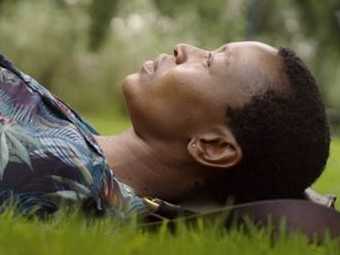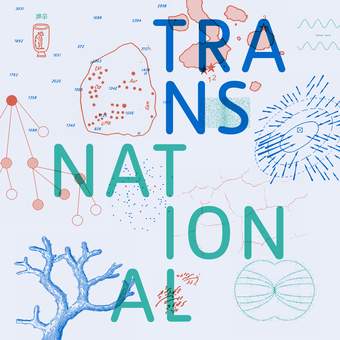I often consider the concept of remembering and forgetting through the tidal movements of the mind. When there is low tide certain things that are hidden reveal themselves and we start to see them and when there's a high tide and it covers up everything we forget them.
This is also how cities are: underground, above ground, past and present.
I'm Hera Büyüktaşcıyan and I'm an artist based in Istanbul.
I'm living at Heybeliada, one of the four Princes' Islands. It's a very utopic piece of land that enables me to have a sense of distance to the city.
I commute around one and a half hours. Whilst you are in the boat it becomes like a floating island almost because I'm not connected to anything.
It gives me a clarity of mind.
I think you need to always take a distance to certain things in order to be able to see the whole picture.
Since I was a child I always had this idea of understanding a city by walking around it.
All these hybrid forms, all these different timelines colliding was something quite exciting for me. It became a way of seeing life and seeing things.
I've been doing these long walks in the old part of the town and I was looking at these converted architecture from the Byzantine heritage to the Ottoman.
Different fragments that were all translated into different beings and forms within time. And whilst I was walking I just came across these stone giants which are the remnants of the Theodosian Arch.
Within the sixties when the modern city was being built there was this very xenophobic approach towards the urban planning especially in the old part of the town that connects with this power and architecture dynamic.
Unwanted particles are being swept away at the corners of the roads then becoming almost invisible forms. People sit on these pillars almost sharing a similar fate of being invisible within the city with their existence.
I started to look at this idea of resistance to time, surface tension, petrification and began to work on the morphology of these ruins through piles of industrial carpets. And within time they became these strata forms that look like certain fragments taken away from the terrain itself. The stone is a concrete material but then the idea of softness and fragility enters to the scene.
This is one of my walking routes that I often take to feel more grounded and to remember somehow who I am.
This is kind of the heart of the town that imbibes different timelines and remnants of the act of erasure as well as the effort to recollect something. We see all these paper collectors, all these pieces of bricks, then fragments of older walls; the daily remains and the ancient ruins share something together which I personally feel that resonates with my own personal being. Being in between both through identities through languages and being born in such a city that is also a city of divisions. I see that in my work too.
There are all these roads of different divisions that coexist together like an act of resistance.
Kalenderhane Mosque formerly was a Byzantine Church named Theotokos Kyriotissa which is a very late period Byzantine heritage and when I look at this place I somehow also connect with the nature of the city.
Istanbul is one of these cities that have gone through so many transformations that have affected the idea of belonging and the idea of foundations. It's an earthquake zone but also symbolically and historically through political acts and power shifts our own ground keeps shaking all the time, even today.
It's not only about our remembrance but also what this ground remembers because it has witnessed so many people passing through it.
Some cities grow horizontally. Some cities grow vertically. Istanbul is a vertical city because there's the idea of the underground as well. One can see this constant cyclic repetition of erasure and then rewriting which in my opinion enables us to read the city like a palimpsest overall.
Palimpsest comes from the ancient world when we see these manuscripts that a particular narrative is written and then it's erased and then a new narrative is written over it. So there is this constant layering that happens.
It's an act of also resistance because the surface resists disappearance.
My works often explore the understanding of space and memory through retracing absence shaped by ruptures of time.
I work with wide range mediums such as sculpture, drawing, stop motion film and site-specific interventions which all anchor with one another through the language of form.
There's always a flow and a matter of duality in my practice where things of two different nature coexists.
Material memory is also something that I often look at. It evokes certain unseen or unspoken elements and narratives. Our hand becomes an agent that remembers through its connection to surface and touch. I let certain memories flow through my fingers.
Lately I've been experimenting with the material of carpets as a space for drawing and mark-making because it's a surface that imbibes our traces, our recollections and it consists an idea of our own foundations. It is also a migratory object: in many migratory movements, we see people having their carpets together with them wherever they go because it creates a sense of belonging and a fluid ground of one’s own.
When I was invited for the Toronto Biennial, industrial carpets that are often used in households became an element that connected with the fragility of foundations and the uncanniness of the ground.
When we look at the formation of the modern city of Toronto, we see these huge forest lands that used to belong to the First Nations, the indigenous land that have been destroyed. The trees that have been cut have been used as pillars to carry the modern city.
From an aerial view the linearity of these maps resonated with the textile patterns that were depicting landscapes particularly Punjabi textiles, the Phulkari pattern. When you look at the linearity of these compositions, it is a depiction of land.
I wanted to create a forest out of these carpets. It's almost like a musical score in general of unspoken histories that becoming vocal through these patterns, the way they interact with one another, the way they stand in space are as if they are physical beings that have been petrified within time.
I don't believe this notion of ghost buildings. Buildings are all alive, we just want to see them as ghosts because it's easier to deal with them like that and to face with those harsh realities that are there, hidden in between the stones or the surface that surface tension that has.
Cities are organisms and no matter if you erase there's always a particle left there that waits for somebody to hear about it.




